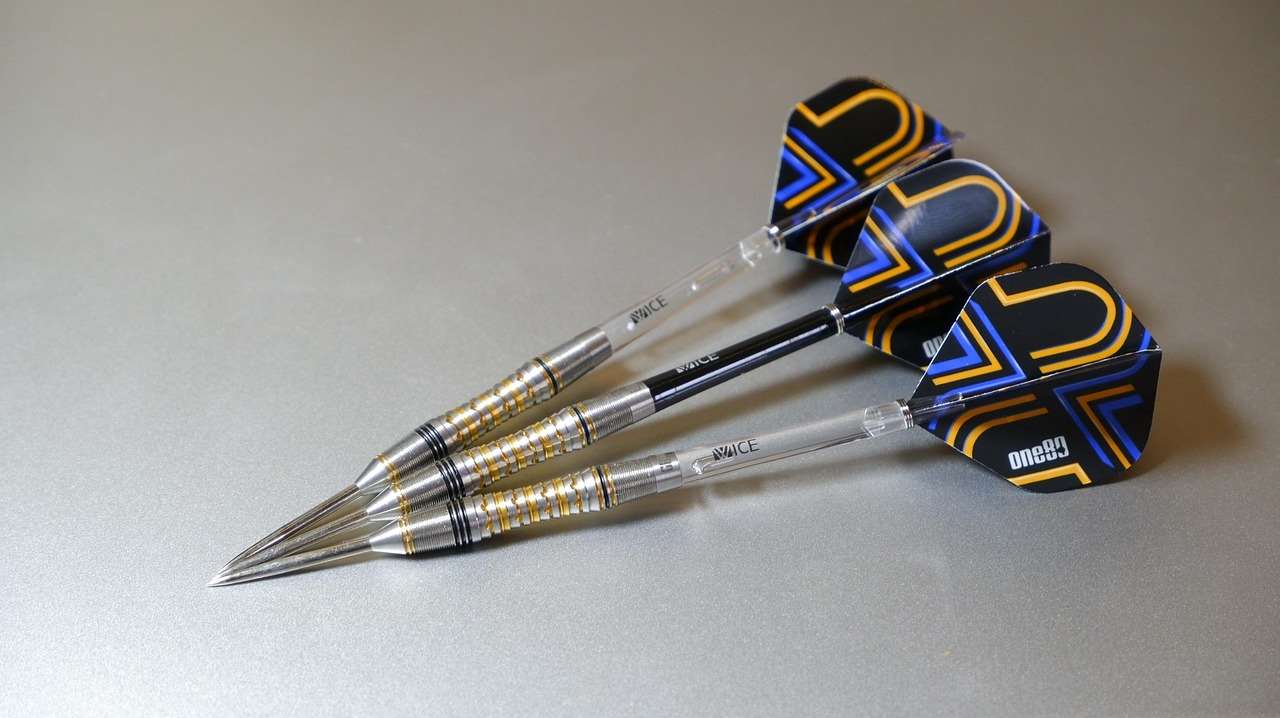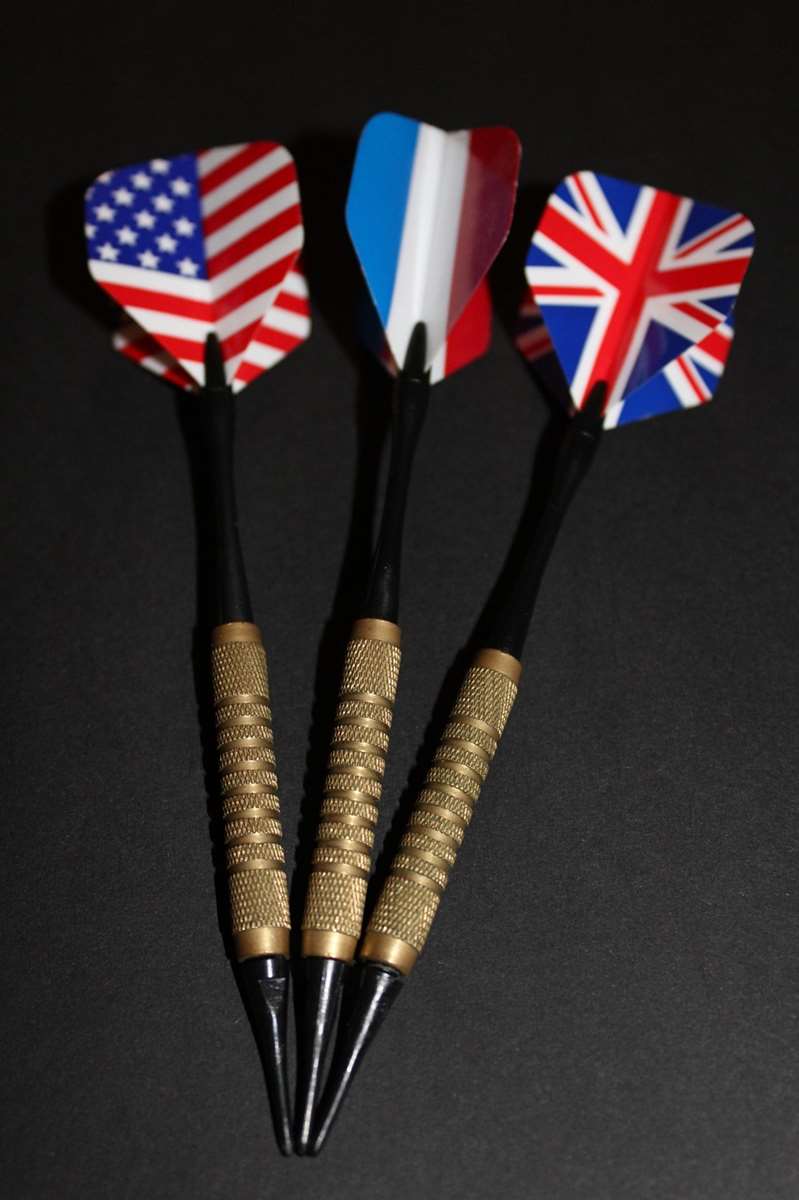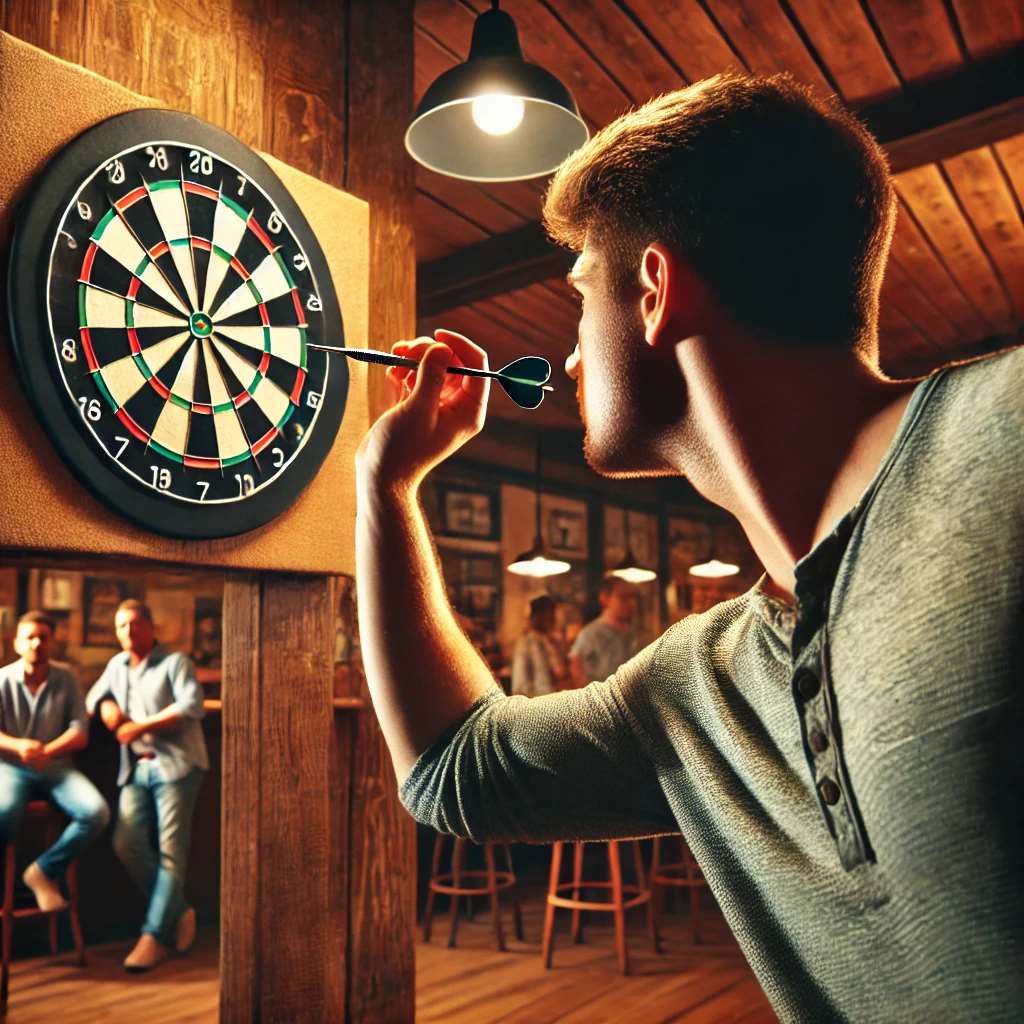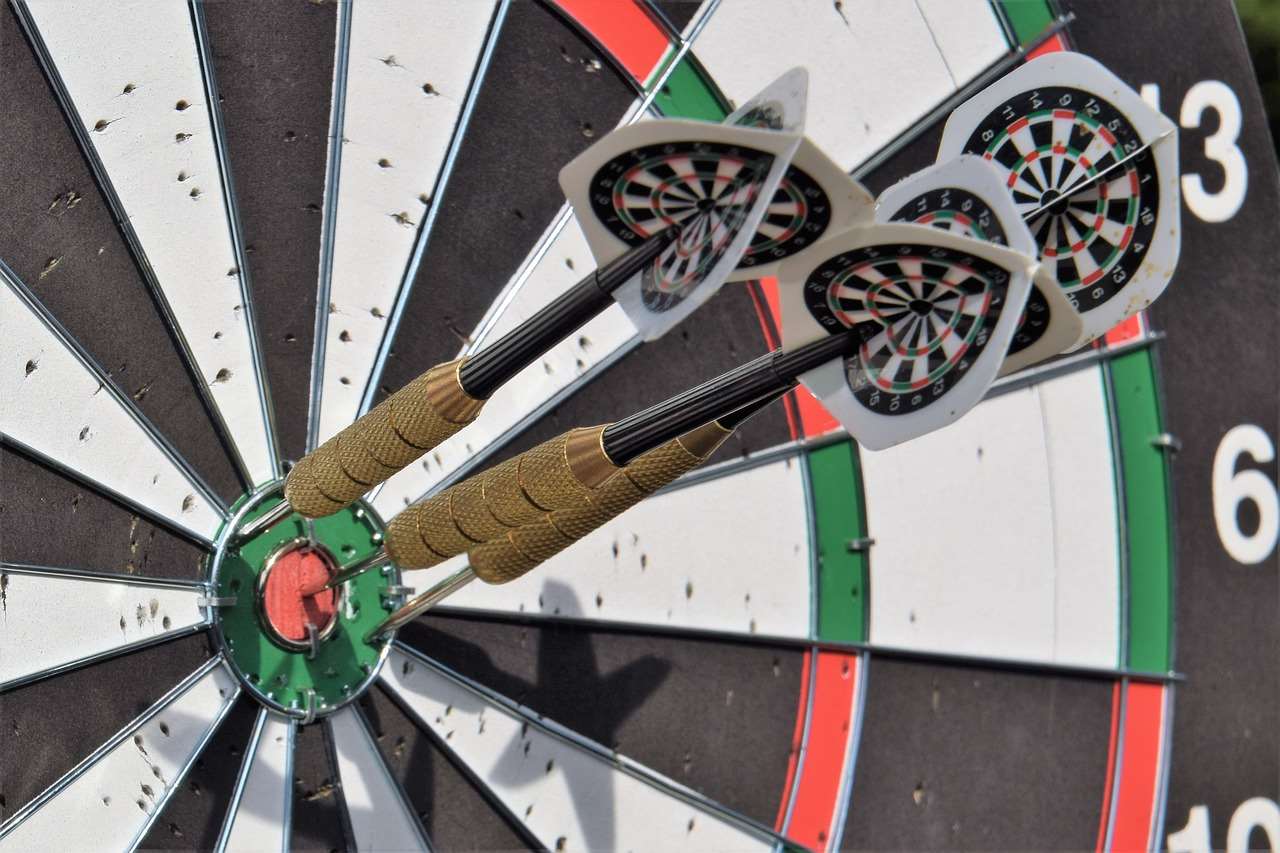Competing in darts for competition requires dedication, strategy, and the right equipment; this article will guide you through mastering the competitive darting scene, from choosing the perfect darts to honing your throwing technique.
⚠️ Still Using Pen & Paper (or a Chalkboard)?! ⚠️
Step into the future! The Dart Counter App handles all the scoring, suggests checkouts, and tracks your stats automatically. It's easier than you think!
Try the Smart Dart Counter App FREE!Ready for an upgrade? Click above!
Understanding the Essentials of Darts For Competition
Before diving into advanced techniques, it’s crucial to grasp the foundational elements of darts for competition. This includes understanding the anatomy of a dart, the different types of dartboards, and the basic rules of the game.
The Anatomy of a Dart
A dart consists of four primary components:
- Point: The sharp end that penetrates the dartboard. Points vary in material and style, impacting grip and board wear.
- Barrel: The main body of the dart, determining its weight and grip. Barrels are often made of tungsten, brass, or nickel-silver.
- Shaft: Connects the barrel to the flight, influencing the dart’s aerodynamics. Shafts come in various lengths and materials like nylon or aluminum.
- Flight: The fins at the back of the dart that stabilize its trajectory. Flights are made of paper, plastic, or other materials, and come in different shapes and sizes.
Selecting the right components is vital. Experiment with different barrel weights and shaft lengths to find what feels most comfortable and accurate for your throwing style. You might find that understanding the Darts Culture And Community Guide will help you with this process.
Dartboard Types and Setup
The standard dartboard used in professional darts for competition is made of sisal fibers. Properly setting up your dartboard is crucial. Ensure it’s hung at the regulation height (5 feet 8 inches to the bullseye) and distance (7 feet 9 1/4 inches from the oche to the face of the board). Illumination is also important; make sure the board is evenly lit to minimize shadows and ensure accurate aiming.

Choosing the Right Darts For Competition
Selecting the ideal darts for competitive play is a highly personal process. Factors such as weight, grip, and material all play a crucial role in performance. Consider these aspects when making your choice:
Dart Weight
Dart weights typically range from 16 to 30 grams. Lighter darts may be easier to throw, while heavier darts can provide greater stability in the air. Most professional players use darts in the 22-26 gram range. Experiment to find a weight that suits your throwing style and strength.
Barrel Material and Grip
The barrel material influences the dart’s grip and durability. Tungsten darts are popular due to their high density, allowing for a slimmer barrel and improved grouping. Brass darts are a more affordable option but are generally bulkier. The grip style (knurled, smooth, ringed) is also a matter of personal preference. Some players prefer a more aggressive grip, while others prefer a smoother feel.
Shaft and Flight Selection
The shaft and flight work together to stabilize the dart in flight. Longer shafts generally result in a higher trajectory, while shorter shafts provide a flatter trajectory. Standard-shaped flights are a good starting point, but experimenting with different shapes (slim, kite, etc.) can fine-tune your dart’s flight characteristics. Consider Travel Tips For Darts Tournaments to ensure safe transportation of your carefully chosen darts.
Mastering Throwing Techniques For Darts For Competition
Consistent and accurate throwing is paramount in darts for competition. Developing a solid throwing technique requires practice and attention to detail. Focus on the following key elements:
Stance and Posture
Your stance provides the foundation for your throw. A stable and balanced stance is essential for consistency. Most players stand with one foot forward, perpendicular to the oche (throwing line). Experiment with different stances to find what feels most natural and comfortable. Maintain good posture, keeping your back straight and your weight evenly distributed.
Grip and Arm Movement
A consistent grip is crucial for repeatability. Hold the dart comfortably but firmly, avoiding excessive squeezing. Your arm movement should be smooth and controlled, originating from the elbow and shoulder. Avoid jerky movements or excessive wrist action. Practice your grip and arm movement until it becomes second nature.
Release and Follow-Through
The release point is critical for accuracy. Aim to release the dart at the same point in each throw. A proper follow-through helps to maintain a consistent trajectory. Extend your arm fully towards the target after releasing the dart. Visualize your target and focus on a smooth, fluid motion. Thinking about attending a live match? Learn What To Expect At Live Darts to prepare yourself.

Effective Practice Drills for Competitive Darts
Consistent practice is the key to improving your darts for competition skills. Incorporate these drills into your training routine to enhance your accuracy and consistency:
Around the Clock
This drill focuses on hitting each number on the dartboard in sequence, starting with 1 and ending with 20. Aim for accuracy and consistency as you move around the board. Increase the difficulty by requiring yourself to hit each number with a single dart or by limiting the number of darts you can use per round.
Shanghai
Choose a number and aim to hit the single, double, and triple of that number in one turn. This drill improves your accuracy and target selection. Once you’ve completed the Shanghai for one number, move on to the next.
Bob’s 27
Start with a score of 27. Aim for the double 1. If you hit it, add the score (2) to your total. If you miss it, subtract the score (2) from your total. Continue this process, aiming for the double 2, double 3, and so on, up to the double 20, then the bullseye. The goal is to reach a score of 0. This drill improves your doubles accuracy and mental toughness.
Target Practice
Choose a specific target, such as the bullseye or a particular triple, and repeatedly aim for it. Track your accuracy and identify areas for improvement. Vary the distance and angle to challenge yourself and develop adaptability.

Mental Strategies for Darts For Competition
In darts for competition, mental fortitude is just as important as technical skill. Develop these mental strategies to improve your performance under pressure:
Visualization
Before each throw, visualize the dart hitting your target. This helps to focus your mind and improve your accuracy. Create a clear mental image of the perfect throw and use it to guide your arm movement.
Positive Self-Talk
Replace negative thoughts with positive affirmations. Remind yourself of your strengths and focus on your goals. Avoid dwelling on mistakes and instead, learn from them and move on.
Concentration and Focus
Minimize distractions and maintain your focus on the target. Block out external noise and internal doubts. Stay present in the moment and avoid thinking about past throws or future outcomes.
Managing Pressure
Learn to manage the pressure of competitive situations. Practice under simulated pressure and develop strategies for staying calm and focused. Remember that everyone makes mistakes, and the key is to bounce back quickly and maintain a positive attitude. Knowing about the Fan Culture At Live Darts can also assist with preparing yourself for the atmosphere.
Equipment Maintenance for Competitive Darts
Proper equipment maintenance is essential for maintaining the performance and longevity of your darts for competition. Follow these tips to keep your darts in top condition:
Sharpening Dart Points
Dull dart points can cause bounce-outs and damage to your dartboard. Use a dart sharpener to maintain a sharp point on your darts. Sharpen your points regularly, especially after prolonged use or if you notice any burrs or damage.
Cleaning Dart Barrels
Dirt and grime can accumulate on your dart barrels, affecting your grip and throwing accuracy. Clean your barrels regularly with a mild soap and water solution. Use a soft cloth or brush to remove any debris. Dry your barrels thoroughly before storing them.

Replacing Shafts and Flights
Shafts and flights can wear out or break over time. Replace them as needed to maintain optimal flight characteristics. Keep a supply of spare shafts and flights on hand so you can quickly replace them during practice or competition. If you’re considering attending a live event, perhaps look into Hospitality Packages Darts Events for a premium experience.
Dartboard Maintenance
Rotate your dartboard regularly to distribute wear and tear evenly. This will prolong the life of your board and maintain optimal playing conditions. Remove any loose fibers or debris from the board surface. Avoid using excessive force when throwing darts, as this can damage the board.
Advanced Strategies for Darts For Competition
Once you’ve mastered the fundamentals, you can start incorporating advanced strategies into your darts for competition game. Here are a few techniques to consider:
Out-Chart Planning
Develop a plan for finishing legs of the game efficiently. Learn common out-charts and practice hitting the necessary doubles and combinations. Knowing your out-charts allows you to think ahead and make strategic decisions during crucial moments.
Opponent Analysis
Observe your opponents’ strengths and weaknesses. Identify their preferred targets, throwing styles, and mental tendencies. Use this information to adapt your own strategy and exploit their vulnerabilities.
Strategic Targeting
Don’t always aim for the highest-scoring areas. Sometimes, it’s more strategic to aim for a lower score that sets you up for a better position on the next throw. Consider the overall context of the game and make decisions that maximize your chances of winning.

Joining a Darts League or Tournament
The best way to improve your darts for competition skills and test your abilities is to join a darts league or tournament. This provides opportunities to compete against other players, learn from experienced competitors, and gain valuable experience under pressure. Look for local darts leagues or tournaments in your area. Many organizations offer different levels of competition to accommodate players of all skill levels.
Consider these factors when choosing a league or tournament:
- Skill Level: Select a league or tournament that matches your current skill level.
- Competition Format: Familiarize yourself with the rules and format of the competition.
- Schedule and Location: Choose a league or tournament that fits your schedule and is conveniently located.
Competing in a darts league or tournament can be a rewarding and enjoyable experience. It’s a great way to improve your skills, meet new people, and share your passion for the game. Remember that Experience Attending Live Darts events can also offer inspiration and learning opportunities.
Conclusion
Mastering darts for competition requires a combination of technical skill, mental fortitude, and consistent practice. By understanding the essentials of dart selection and setup, mastering throwing techniques, developing effective practice drills, and cultivating mental strategies, you can significantly improve your performance on the dartboard. Remember to maintain your equipment properly and consider joining a darts league or tournament to test your skills and gain valuable experience. Take the leap and begin your journey into competitive darts today – pick up your darts, practice these tips, and aim for the bullseye! Ready to elevate your game? Start practicing these strategies now!
Hi, I’m Dieter, and I created Dartcounter (Dartcounterapp.com). My motivation wasn’t being a darts expert – quite the opposite! When I first started playing, I loved the game but found keeping accurate scores and tracking stats difficult and distracting.
I figured I couldn’t be the only one struggling with this. So, I decided to build a solution: an easy-to-use application that everyone, no matter their experience level, could use to manage scoring effortlessly.
My goal for Dartcounter was simple: let the app handle the numbers – the scoring, the averages, the stats, even checkout suggestions – so players could focus purely on their throw and enjoying the game. It began as a way to solve my own beginner’s problem, and I’m thrilled it has grown into a helpful tool for the wider darts community.